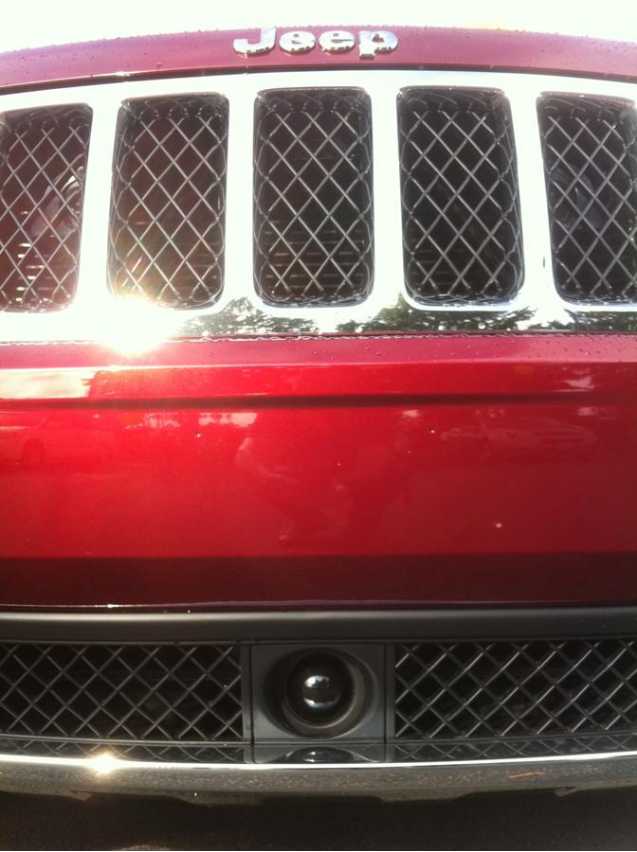Table Of Content

LATCH is an acronym that stands for Lower Anchors and Tethers for Children. It is a set of attachment points that make installing child safety seats easier. This system is separate from a vehicle’s seatbelt safety system, which you can also use to help secure your child’s safety seat. As always, while DRCC offers numerous benefits, it’s not a substitute for attentive driving.
Dynamic Radar Cruise Control (DRCC)
I use this feature to stay under the speed limit as an extra precaution to avoid getting a ticket. Knowing that when good ideas are shared, great things happen, we created the Collaborative Safety Research Center (CSRC) in 2011. Eye-catching headlights on GR86 feature distinctive LED Daytime Running Lights (DRL) to improve visibility and style, as well as an available Adaptive Front-Lighting System (AFS). At night, Adaptive Front-Lighting headlights turn alongside the front wheels, helping you see better around the next corner.
Vehicles
The set vehicle speed will be displayedon the multi-information display. Our Go Safely initiative includes a variety of safety education programs that help develop better drivers of all ages. GR Supra comes equipped with a number of intelligent safety features, including a Pre-Collision System with Pedestrian Detection, Lane Departure Warning with Steering Assist , Automatic High Beams and Speed Limit Information.
Know Your Toyota
Acura's Adaptive Cruise Control allows the user to choose three intervals for following distance. Once the system detects an slower vehicle entering range, sensors will convince the ECU to decrease the vehicle's speed. Once the path clears, the cruise control will allow acceleration back to the preset speed. Radar cruise control, commonly referred to as adaptive cruise control, represents a significant advancement in driving technology. Where traditional cruise control maintains a constant speed set by the driver, adaptive cruise control adds the capability to automatically adjust vehicle speed to maintain a safe following distance from vehicles ahead.
Full-Speed Range DRCC vs. Standard DRCC
Radar cruise control engages in a similar fashion as conventional cruise systems by the driver activating the unit through a switch located on the steering column or wheel. However, while speed settings on normal cruise control can be set or tuned manually via a dimmer-type switch, adaptive cruise control is also controlled by a electronic control unit (ECU). Once activated, speed will be held at a constant level while maintaining a minimum distance between forward vehicles.

This reduces the need for constant driver intervention and allows for greater attention to the road. Not only does this contribute to safety, but it also can lead to improved fuel efficiency, since the system optimizes acceleration and braking for us. The available Blind Spot Detection (BSD) warns you when a vehicle in the next lane enters GR86’s blind spot. And when you’re in reverse, Rear Parking Sonar with Reverse Automatic Braking uses sensors on the rear bumper to detect obstructions behind the vehicle.
Assisting systems
The Full-Speed Range DRCC works with the Toyota Pre-Collision System to make driving highly convenient. This system is designed to work in a broader speed range than the standard DRCC. Combining these features into the TSS package underscores our dedication to safety while maintaining the joy of driving. Depress the acceleratorpedal to accelerate the vehicleto the desired vehiclespeed.
Engineers develop hack to make automotive radar hallucinate - Tech Xplore
Engineers develop hack to make automotive radar hallucinate.
Posted: Wed, 31 Jan 2024 08:00:00 GMT [source]
Discover Toyota
Adaptive cruise control does have limitations—it’s crucial to understand how the system operates in various traffic scenarios and what its boundaries are. It’s not a substitute for our attention or a replacement for defensive driving. In particularly complex driving situations, such as inclement weather or unstructured road environments, the system may not function as expected, and we should be ready to take control of the vehicle.
Step-By-Step Instructions To Use Toyota Dynamic Radar Cruise Control
Dynamic Radar Cruise Control is designed to assist the driver and is not a collision-avoidance system or a substitute for safe and attentive driving practices. System effectiveness depends on many factors such as weather, traffic and road conditions. Please see toyota.ca, your local Toyota Dealer or Owner’s Manual for details. According to the Canadian Council of Motor Transport Administrators, fatigue plays a role in up to 21 percent of motor vehicle collisions, making it the third-highest measurable cause of accidents in the country.
On the highway, our radar cruise control system thrives; it maintains a preset distance from the vehicle ahead, allowing us to set and forget our cruising speed. The open road’s consistent flow allows the technology to adjust our speed effectively, keeping us at a safe, preselected gap from other motorists. This provides us a more relaxing and efficient driving experience, especially on long journeys. DRCC automatically adjusts your vehicle’s speed to maintain a set distance from the car in front. Full-Speed Range DRCC offers the same features but can bring your vehicle to a complete stop and resume speed again, making it more suitable for stop-and-go traffic conditions.
Through radar cruise control, our vehicles not only maintain a set speed but also adapt to traffic conditions by accelerating or decelerating as necessary. Importantly, this refinement allows for a more relaxed and safer driving experience. Working within a set speed range, MRCC automatically adjusts and maintains a safe following distance from the car in front, thus relieving some of the burden of the driver on long drives and on highways. DRCC is an adaptive cruise control system that uses a millimeter wave radar to detect vehicles ahead of the driver.
First, you have the Cruise Control on the right-hand side of the steering wheel on a stem, with the on and off switch on the end of the stem. Second, you will have an on and off button on the right-hand side of the steering wheel to engage the system. Ensure you're up to date with the safety conditions of any Toyota you drive. We are honored by IIHS (Insurance Institute for Highway Safety) recognizing Toyota vehicles as a safe and reliable choice for you. Use our personalized guide for step-by-step car seat installation instructions. TSS is offered in the form of two packages—Toyota Safety Sense™ C (TSS-C) for compact vehicles and Toyota Safety Sense™ P (TSS-P) for midsize and large vehicles—and DRCC is one of four features offered with TSS-P.
We work hard to strike a balance between content and ads and as a free site we greatly appreciate your support in permitting ads to render. Ads help us cover our server and maintenance costs, which helps us continue to keep this site free to use. You also don't want to miss out on any specials or discounts posted from the Cruise & Travel Industry!
It’s crucial to remain fully focused on the road and be prepared to take control of the vehicle at any time. Cruise control systems have experienced significant advancements, transitioning from simple speed maintainers to complex semi-autonomous systems interlinked with multiple vehicle control functions. Furthermore, the stop and go function is particularly helpful in stop and go traffic. In heavy traffic, the driver can relax and can simply avoid the repetitive action of accelerating and deaccelerating. With Toyota For Families, find out where and how to install your child’s car seat in your vehicle with a step-by-step tutorial. You will have one of two DRCC system interfaces on most Toyota vehicles.
DRCC is a feature that automatically adjusts your vehicle’s speed to maintain a preset following distance from the car ahead. It enhances safety, reduces driver fatigue, and offers added convenience, especially during long drives or in stop-and-go traffic. In case, the vehicle in front completely stops, the Mazda radar cruise control automatically brings your vehicle to a complete halt. In order to avoid a collision, the system also alerts the driver for rapid braking. Once the driver taps or presses the accelerator slightly, the system will automatically accelerate to the preset speed.
For the best site experience please disable your ad blockers for cruisingearth.com, then click the button below. Furthermore, the MRCC also comes with Distance Recognition Support System (DRSS). Airbag systems were designed to assist in keeping you and your passengers protected. A more recent development is the binocular computer vision system, such as that introduced to the US market in model year 2013 by Subaru. These systems have front-facing video cameras mounted on either side of the rearview mirror and use digital processing to extract depth information from the parallax between the two cameras' views.

No comments:
Post a Comment